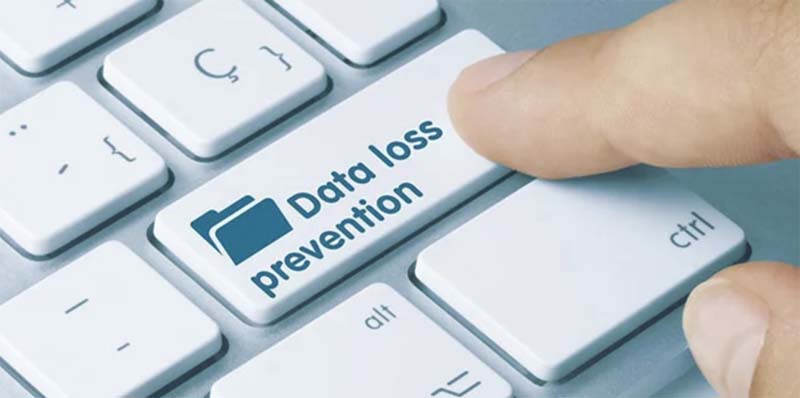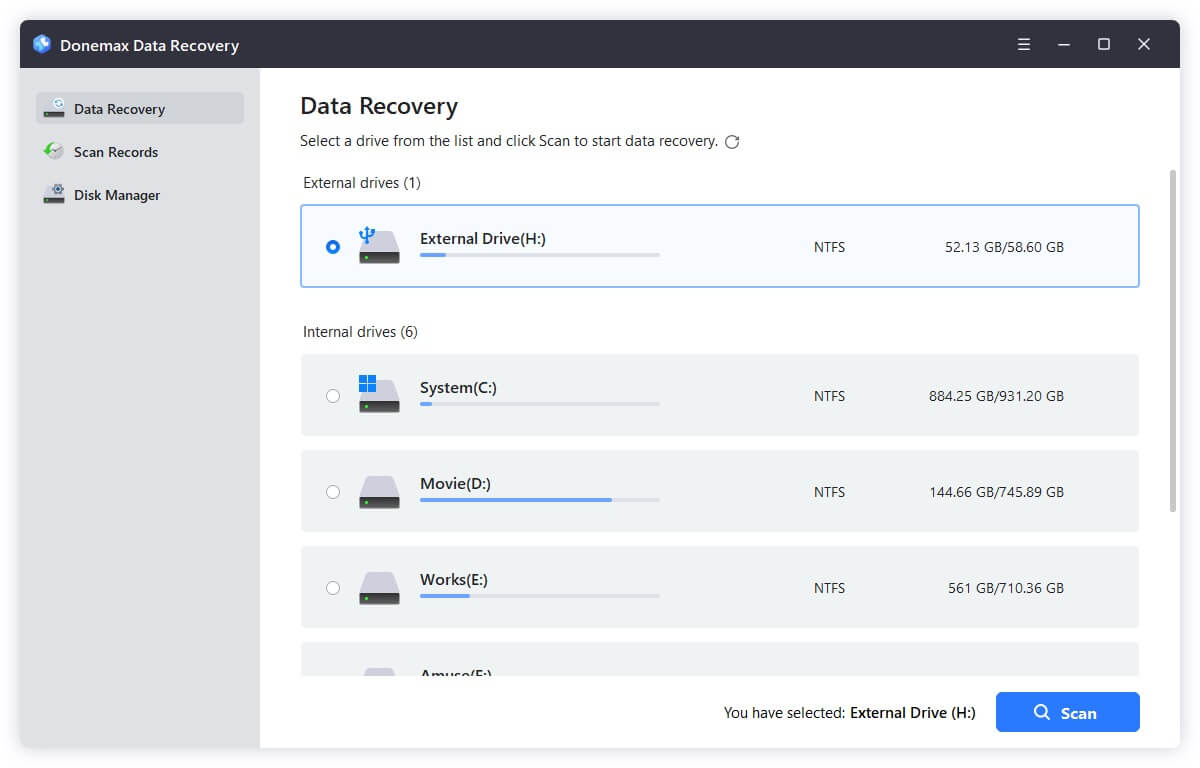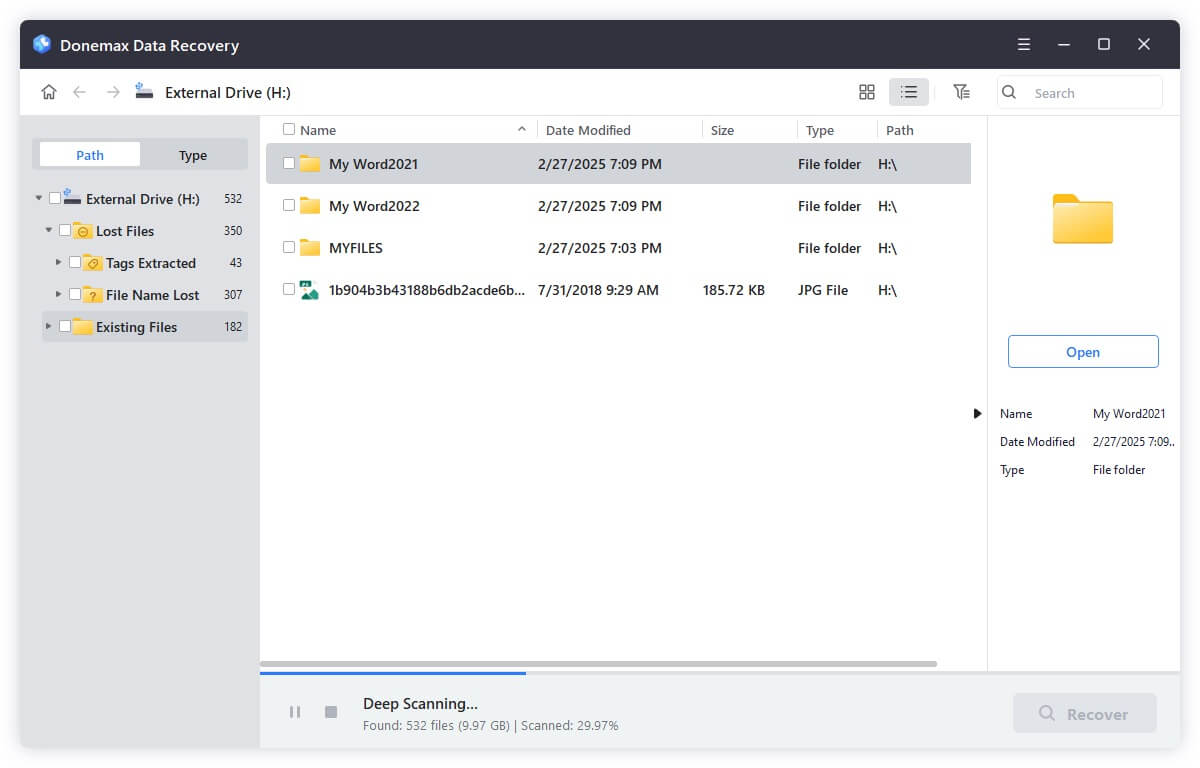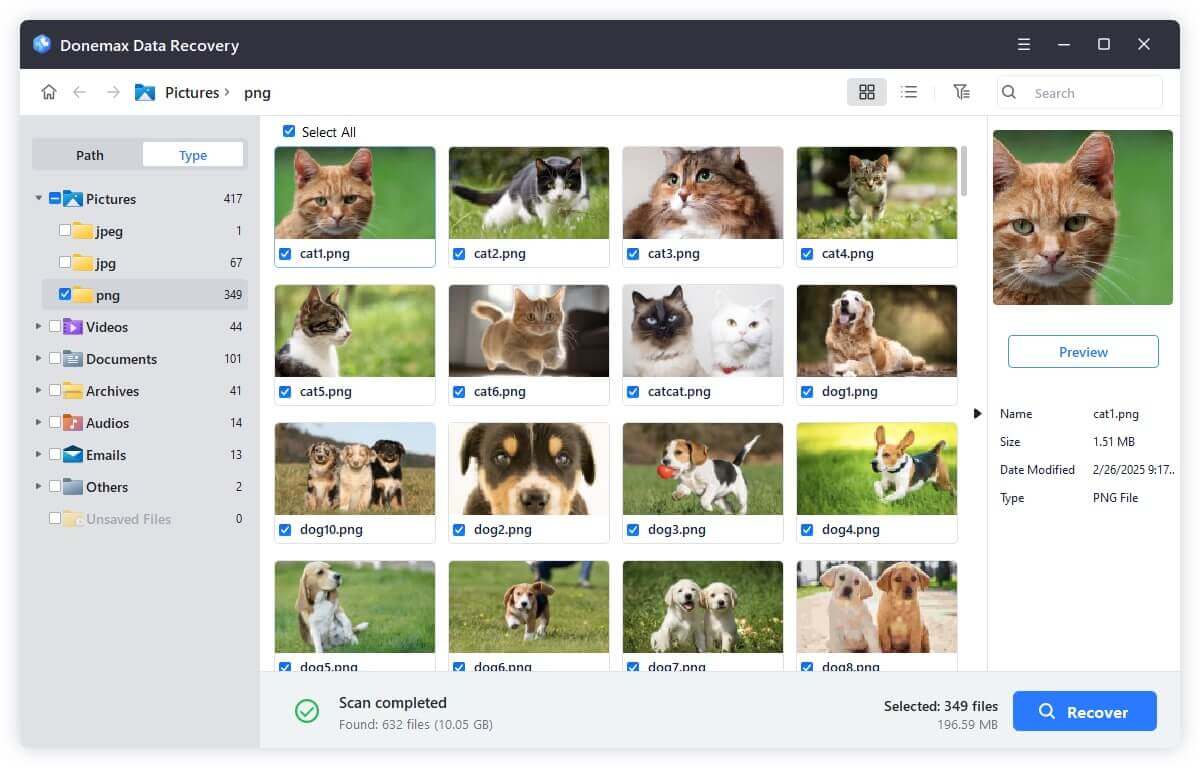Tip: Find the causes of data loss, then take actions to prevent data loss such as making a backup, using good hardware, etc. If you have lost data, you can use data recovery software - such as Donemax Data Recovery to help recover the lost data.
PAGE CONTENT:
In today's data-driven world, we rely on digital files for everything - from family memories and financial documents to critical business data. Whether you're a casual computer user, a small business owner, or an IT professional, the loss of important data can be devastating. Fortunately, most data loss is preventable, and even when it does occur, you often have options to recover it.
In this article, we'll explore the best strategies to prevent data loss and outline proven techniques to maximize your chances of successful data recovery.

Part 1: How to Prevent Data Loss
1. Regular Backups: Your First Line of Defense
The single most effective way to protect against data loss is to perform regular backups.
Types of Backups:
- Full Backup: Copies everything; takes longer and requires more storage.
- Incremental Backup: Only backs up files changed since the last backup, saving time and space.
- Differential Backup: Backs up changes since the last full backup; faster than full but uses more space than incremental.
Recommended Backup & Clone Tools:
- Windows File History
- macOS Time Machine
- Acronis True Image
- Donemax Disk Clone
- Cloud Services: Google Drive, Dropbox, OneDrive, iCloud
Best Practices:
Follow the 3-2-1 Rule:
- 3 total copies of your data
- 2 different storage media (e.g., external hard drive + cloud)
- 1 copy stored offsite
Backup frequency depends on how often your data changes. For businesses, daily or real-time backups are ideal. For personal use, weekly backups may suffice.
2. Use Reliable Hardware
Cheap or outdated hardware increases the risk of drive failure, which is one of the leading causes of data loss.
Tips:
- Invest in well-reviewed SSDs or enterprise-grade HDDs.
- Replace storage devices every 3-5 years or at the first sign of instability.
- Avoid refurbished or second-hand storage devices.
Monitor Your Drives:
Use tools to monitor hard drive health:
- CrystalDiskInfo
- Hard Disk Sentinel
- SMART Monitoring Tools
These applications can alert you to potential failures before they happen, giving you time to back up your data.
3. Protect Against Malware and Ransomware
Malware can corrupt, encrypt, or delete your files - sometimes permanently.
Protection Strategies:
- Install and regularly update antivirus/anti-malware software.
- Use firewalls and intrusion detection/prevention systems.
- Stay away from suspicious email links and file downloads.
- Keep your operating system and software up to date.
Consider endpoint protection platforms if you're managing multiple systems in a business environment.
4. Handle Devices with Care
Many data loss incidents result from physical damage to storage devices.
Prevention Tips:
- Always safely eject external drives before unplugging.
- Avoid moving laptops or external hard drives while in use.
- Keep storage devices in cool, dry environments.
- Use anti-static bags or enclosures for transport and storage.
5. Power Protection
Power outages or surges can corrupt data and damage hardware.
Solutions:
- Uninterruptible Power Supplies (UPS): Give you time to save work during outages.
- Surge Protectors: Prevent sudden voltage spikes from damaging components.
This is especially important for desktops and servers, which are more vulnerable to power fluctuations than laptops.
6. Educate Users
Whether in a household or business environment, human error is a major cause of data loss.
Educational Measures:
- Train employees or family members on safe data practices.
- Encourage the use of cloud sync and auto-save features.
- Implement access controls and activity logs in business environments.
Part 2: How to Get the Best Chance of Data Recovery
Even with the best precautions, data loss can still happen. The good news? In many cases, the data can be recovered - if you act quickly and follow the right steps.
1. Stop Using the Affected Device Immediately
When data is deleted or a drive becomes inaccessible, the data isn't always immediately lost - it's often still on the disk, marked as "free space."
Why You Should Stop:
- Continuing to use the drive may overwrite the deleted data.
- Avoid installing recovery software on the same drive - it can replace the files you're trying to recover.
Instead, use another system or boot from a live USB drive to access recovery tools.
2. Use Professional Data Recovery Software
For logical data loss - accidental deletions, file system errors, or formatting - recovery software may be sufficient.
Popular Data Recovery Tools:
- Donemax Data Recovery (Windows & macOS): Easily and completely recover deleted, formatted and lost data.
- Recuva (Windows): Simple and free; ideal for basic recovery.
- Do Your Data Recovery: Intuitive UI, recovers files from partitions and formatted drives.
- Disk Drill (Windows/macOS): Advanced scanning with preview support.
- Stellar Data Recovery: Great for a wide range of file types and storage devices.
Features of Professional Data Recovery Software:
The best tools offer a robust set of features that distinguish them from basic or free utilities:
- Deep Scan and Quick Scan Modes: Quick scan recovers recently deleted files, while deep scan combs through raw sectors to recover long-lost or complex data.
- Support for Multiple File Systems: NTFS, FAT32, exFAT, HFS+, APFS, EXT3/EXT4, etc.
- Preview Before Recovery: Enables users to preview recoverable files - such as documents, videos, and images - before committing to recovery.
- Filter by File Type or Date: Helps streamline the recovery process by targeting specific file types (e.g., JPEG, DOCX, MP4).
- Partition Recovery: Rebuilds lost or deleted partition tables to restore full disk access.
- Resume Scan Sessions: Allows saving progress of long scans, which is useful for large drives.
- Hex Editor (Advanced Users): For manually checking raw sectors and analyzing damaged data.
For example, you can use Donemax Data Recovery to easily and completely recover lost data:
Step 1. Download and install Donemax Data Recovery on your computer, then open it.
Step 2. Open Donemax Data Recovery and select the drive where you delete or lose your files.

Step 3. Click on Scan button. Donemax Data Recovery is able to deeply scan the hard drive and find all recoverable files.

Step 4. Once the scanning process gets finished, you can preview all recoverable files. Then select the wanted files, click on Recover button to save them.

How to Use Data Recovery Software Effectively?
Using the software correctly increases your chance of successful recovery and minimizes further data loss. Here's a typical step-by-step process:
- Stop Using the Drive Immediately
- Avoid writing new data to the drive, which could overwrite the sectors containing your lost files.
- If the lost data is on your system drive (C:), shut down the system and boot from another disk or recovery environment.
- Install Recovery Software on a Different Drive
- Always install the software on a drive other than the one you want to recover from.
- This prevents overwriting any remaining recoverable data.
- Launch and Scan
- Open the software and select the affected drive or partition.
- Use "Quick Scan" first, then "Deep Scan" if the files don't show up.
- Preview and Select Files
- Use built-in preview tools to inspect file integrity - especially useful for photos and documents.
- Filter by file type, size, or date for faster browsing.
- Recover to a Safe Location
- Save recovered files to a different drive or external storage.
- Never save recovered files back to the same drive you're recovering from.
- Backup Your Data Immediately After Recovery
- Once recovery is successful, make a full backup to avoid needing recovery again in the future.
Limitations of Software Recovery:
While professional tools are powerful, they are not magic. There are scenarios where software cannot help:
- Physically Damaged Drives: Clicking or grinding noises usually mean hardware failure. Using software in this case may worsen the damage.
- TRIM-Enabled SSDs: Modern SSDs automatically wipe deleted data at the hardware level when TRIM is active, making recovery impossible in many cases.
- Overwritten Files: If a file has been overwritten, no tool can bring it back.
In such cases, consulting a professional data recovery service with a cleanroom environment is necessary.
Best Practices to Maximize Software Recovery Success:
- Avoid disk defragmentation or formatting after data loss.
- Use disk imaging tools to clone the drive and perform recovery on the clone.
- Use read-only modes if supported by the software to avoid accidental writes.
- If you're unsure, stop and get expert help. Time and incorrect handling are the two biggest enemies of data recovery.
3. Call a Professional Data Recovery Service
When DIY tools fail - or if your storage device is physically damaged - a professional data recovery lab is your best option.
When to Call the Pros:
- Clicking or grinding noises from hard drives
- Devices not recognized by the operating system
- RAID array failure
- Water/fire damage
What to Expect:
- Evaluation: Most services provide a free or low-cost diagnosis.
- No-recovery-no-fee policies: Common among reputable services.
- Cleanroom recovery: Technicians open drives in controlled environments.
- Encryption handling: Experts can work with encrypted drives - if you provide the key.
Top Data Recovery Companies:
- DriveSavers
- Ontrack
- Gillware
- Secure Data Recovery
Note: Recovery costs can range from $300 to over $3,000 depending on severity and urgency.
4. Understand File System Behavior
Different file systems handle deletion and formatting in different ways, which affects recovery potential.
File Systems and Their Recovery Traits:
- NTFS (Windows): Retains metadata; easier to recover recently deleted files.
- FAT32/exFAT: Common on USB drives; metadata is often lost on deletion.
- APFS (Mac): More secure; but harder to recover without third-party tools.
- EXT4 (Linux): Fragmented recovery; overwritten files are often unrecoverable.
Quick vs. Full Format:
- Quick Format: Only clears file system metadata; data is still recoverable.
- Full Format: Overwrites data; much harder to recover files.
Avoid formatting if recovery is the goal.
5. Use Disk Imaging for Safe Recovery
Before running any scans or recovery tools, it’s smart to create a sector-by-sector image of the affected drive.
Why Use Disk Imaging?
- Preserves the original state in case recovery efforts fail or cause damage.
- Allows you to run multiple recovery tools on the copy, not the source.
Recommended Tools:
- Donemax Disk Clone: A powerful disk cloning program for Windows and macOS.
- Clonezilla: Free and open-source; for experienced users.
- Macrium Reflect: Ideal for cloning and imaging.
- ddrescue (Linux): Excellent for drives with bad sectors.
Always store the disk image on a separate, healthy drive.
Bonus Tips to Enhance Data Safety and Recovery
1. Enable File Versioning
Services like Google Drive, Dropbox, and OneDrive support file versioning, letting you revert to previous versions even after changes or deletions.
2. Use Encrypted Backups
If you're storing sensitive data, encrypt your backups. But remember: Keep your encryption key safe. Without it, data recovery is virtually impossible.
3. Perform Periodic Recovery Tests
In a business setting, simulate data loss scenarios to test your backup and recovery strategy. This ensures your systems are actually recoverable.
Conclusion
Data loss can be a nightmare - but with proactive planning and quick, smart action, it doesn't have to be a disaster. The best protection is prevention: back up your data regularly, protect your hardware, and stay aware of digital threats. But if something goes wrong, stop using the device immediately and use the appropriate recovery tools or services.
By combining strong prevention strategies with effective recovery techniques, you'll give yourself the best chance of keeping your data safe - or getting it back when it matters most.


Donemax Data Recovery
Donemax Data Recovery is one of the best data recovery software. It is easy-to-use and can help in recovering deleted, formatted, inaccessible or lost data from HDD/SSD, external disk, USB drive, SD card, camera or other storage devices.
Related Articles
- Apr 29, 2025How to Fix BitLocker Not Working? [6 Solutions]
- Jun 24, 2025How to Format Hard Drive on Window 7?
- Mar 04, 2025How to Format a Drive with PowerShell: A Complete Guide
- Aug 20, 2025Windows Boot Repair Tool: Guide to Fix Startup Problems
- Aug 19, 2025Solutions to Fix the Error Accessing the Registry
- Feb 21, 2025Can't Format My Memory Card on Windows11/10/8/7? How to Fix It

Christina
Christina is the senior editor of Donemax software who has worked in the company for 4+ years. She mainly writes the guides and solutions about data erasure, data transferring, data recovery and disk cloning to help users get the most out of their Windows and Mac. She likes to travel, enjoy country music and play games in her spare time.

Gerhard Chou
In order to effectively solve the problems for our customers, every article and troubleshooting solution published on our website has been strictly tested and practiced. Our editors love researching and using computers and testing software, and are willing to help computer users with their problems
